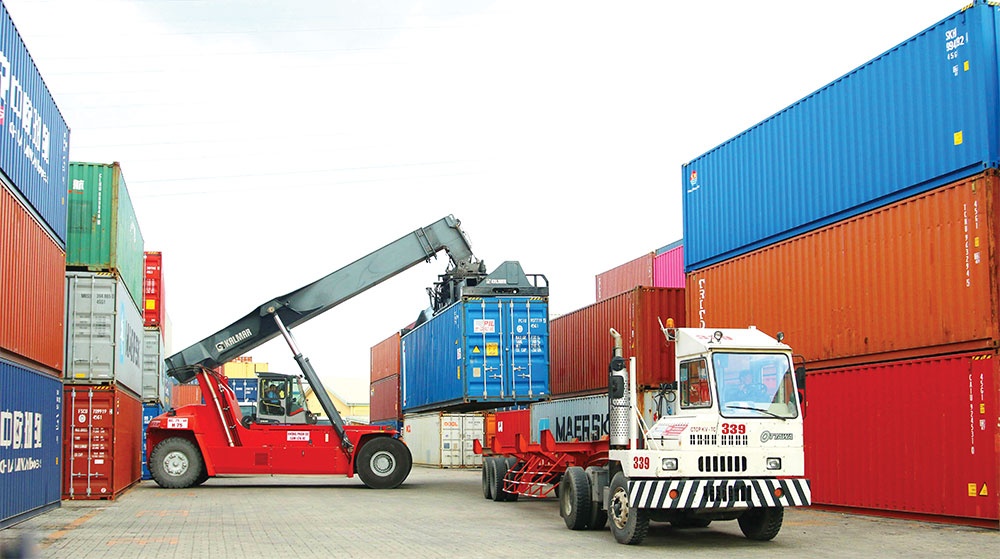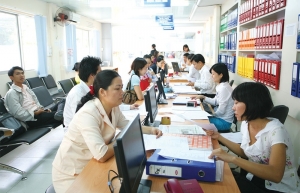Leaders question validity of short-term VAT fix to support business community
 |
| The length of policy will make a huge difference to both individuals and businesses, Photo: Xuan Khanh |
At the National Assembly (NA) last week, Minister of Finance Ho Duc Phoc stressed that the 2 per cent VAT be only applied for six months until December 31, despite many NA members calling for a cut in 2024 or 2025.
The Ministry of Finance estimates the cut will reduce government revenues by $173.9 million per month and $1.04 billion over the second half of 2023.
“This VAT reduction scheme has been strictly appraised by the Financial and Budgetary Committee, and agreed on by the NA Standing Committee,” Phoc said. “The reduction has been calculated in a manner suitable to the state budget, and will help stimulate demand for consumption and solve short-term difficulties only.”
However, NA members such as To Ai Vang representing the Mekong Delta province of Soc Trang do not agree with the 2 per cent reduction.
“The decrease may not good for the economy. Many nations are competing with one another via a reduction of taxes for enterprises to draw investment, and we should consider a bigger reduction of 3-4 per cent to promote consumption and increase purchasing power. Businesses can sell their products more and boost recovery as soon as possible,” Vang said.
She also suggested that the VAT drop should be applied until late next year.
“The geopolitical and energy crises coupled with the disruption of production and supply chains have led to a plummet in orders, badly affecting the export of many key items,” Vang said. “Prolonging the VAT reduction until late 2024 will help businesses to formulate long-term, stable plans.”
NA deputy Tran Chi Cuong, representing the central city of Danang, also commented that the six-month reduction was too short and would not reach the desired results.
“Though in the latter half of this year a VAT reduction will help people and businesses to increase spending and stimulate consumption and the purchasing power, some new factors will increase inflation, causing a hike in electricity prices and basic salaries,” Cuong said.
“So, will this policy be really effective? It is suggested that the VAT reduction validity of only six months be reconsidered. It needs to be long enough to produce desired results and sufficient to reach set goals.”
Cuong proposed the policy be applied until late 2024 to have sufficient time for benefits to materialise, so that localities could take the initiative and calculate their reduction in budget revenues and spending to make better estimates for the next year.
Many NA deputies, such as Mai Thi Phuong Hoa from the northern province of Nam Dinh, said they agreed with the government proposal of a 2 per cent VAT cut, but it just needed to last longer.
“It is forecast that enterprise difficulties will continue as the economy is set to continue suffering from woes at home and abroad. I recommend that this policy should be applied until late 2024 and even 2025, and that the lending rates at commercial banks should be reduced to below 9 per cent, with simpler borrowing conditions.”
Meanwhile, NA deputy Vu Tien Loc, representing Hanoi, stressed that the fiscal and monetary policy space remained significant as the five-month trade surplus sat at $9.8 billion and public investment now equalled 43.1 per cent of GDP – far lower than the 60 per cent level fixed by the legislature.
“It is good to continue to apply the VAT reduction. The problem is how, and to what extent, and for how long. I suggest that if the 2 per cent decrease is implemented, it should be applied to all types of goods and services and the valid time should be until late 2024,” Loc said.
“Then, if the economy continues to face massive difficulties, we should create conditions so that the VAT scheme can automatically be prolonged without being submitted to the NA. This measure will help enterprises and people to flexibly benefit and boost market demand and confidence.”
The NA will issue a resolution on approving the VAT reduction on June 24, the last day of the ongoing fifth session.
The VAT reduction, proposed by the government, is set to be applied on most types of goods and services currently subject to a 10 per cent rate, such as telecommunications, finance and banking, securities and insurance, real estate, metal, mining (excluding coal), coke mining, refined oil, and chemical products, as well as goods and services subject to excise tax.
 | Support to continue in form of VAT cut Many types of goods and services currently subject to a 10 per cent VAT rate are to continue being eligible for a 2 per cent reduction in this type of tax, which is scheduled to get the official thumbs-up from the legislature in late June. |
What the stars mean:
★ Poor ★ ★ Promising ★★★ Good ★★★★ Very good ★★★★★ Exceptional
Related Contents
Latest News
More News
- First members of Danang International Finance Centre revealed (December 22, 2025 | 17:39)
- Human-centred governance seen as key to AI development (December 19, 2025 | 18:19)
- Top 10 notable events of Vietnam’s industry and trade sector in 2025 (December 19, 2025 | 14:00)
- Tungsten surges to 12-year high as world enters a new 'black gold' race (December 18, 2025 | 17:27)
- Vietnam’s coffee exports set new record despite price pressures (December 18, 2025 | 17:13)
- Garment and textile sector seeks new growth after volatile year (December 18, 2025 | 17:01)
- VinSpeed and Siemens strengthen cooperation for high-speed rail development (December 18, 2025 | 16:53)
- High-tech adoption for TH true MILK (December 18, 2025 | 13:39)
- Takeda supports health resilience amid climate change challenges (December 18, 2025 | 12:39)
- Mondelez Kinh Do - a chapter of purpose-led leadership in Vietnam (December 18, 2025 | 09:44)

 Tag:
Tag:






















 Mobile Version
Mobile Version